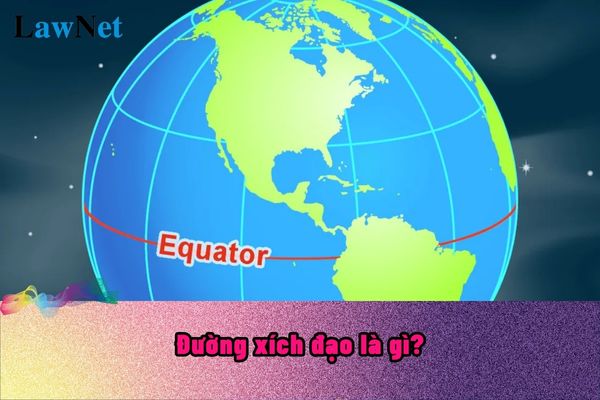In Vietnam, what does the Equator mean? At which grade is identifying the Equator on a map included in the History and Geography curriculum?
In Vietnam, what does the Equator mean?
The Equator is an imaginary circle that surrounds the Earth at 0 degrees latitude. It divides the Earth into two equal parts: the Northern Hemisphere and the Southern Hemisphere.
Length: The Equator is approximately 40,075 km long.
Countries crossed: Many countries have a portion of their territory on the Equator, spanning Africa, Asia, and America.
Climate: Equatorial regions usually have a hot and humid climate with heavy rainfall.
Is Vietnam on the Equator?
Vietnam and the Equator
Vietnam is not located on the Equator. Our country lies primarily in a tropical region, but most of its territory is situated north of the Equator. Therefore, Vietnam's climate is characterized by a tropical monsoon climate, with a clear differentiation between seasons.
Which countries are on the Equator?
The Equator is an imaginary line that divides the Earth into the Northern and Southern Hemispheres. Many countries are fortunate to have part of their territory right on this "waistline" of the Earth, which grants them unique climatic, geographic, and cultural characteristics.
Some notable countries through which the Equator passes:
Africa: Gabon, Republic of Congo, Democratic Republic of Congo, Uganda, Kenya, Somalia.
Asia: Indonesia (major islands such as Sumatra, Borneo, Sulawesi), Maldives.
America: Ecuador, Colombia, Brazil.
>>> In summary, the Equator is not just an imaginary line on the map, but also a significant boundary in terms of climate, culture, and nature. Understanding the countries lying on the Equator helps us appreciate the diversity of our planet.
*Note: Information about Equator is serves only as a reference./.

In Vietnam, what does the Equator mean? In Vietnam, at which grade is identifying the Equator on a map included in the History and Geography curriculum? (Image from the Internet)
In Vietnam, at which grade is identifying the Equator on a map included in the History and Geography curriculum?
Under Section 5 of the General Education Program for History and Geography issued with Circular 32/2018/TT-BGDDT, the content of the 6th-grade History and Geography curriculum is as follows:
- System of meridians and parallels. Geographic coordinates of a location on the map - Identity on the map and on the Globe: prime meridian, Equator, and hemispheres; record the geographic coordinates of a location on the map.
- Basic elements of a map
- Recognition of some grids of parallels and meridians on the world map.
- Ability to read map symbols and legends of administrative maps, and topographic maps.
- Ability to determine direction on a map and calculate actual distances between two locations on the map according to the map scale.
- Common types of maps
- Ability to read maps, and determine the location of geographical objects on a map.
- Ability to find routes on a map.
- Memory sketch map
- Ability to draw a memory sketch map reflecting personal familiar geographical objects.
Thus, identifying the Equator on a map is included in the 6th-grade History and Geography curriculum.
In Vietnam, are 6th-grade History and Geography mandatory subjects?
According to Section 1 of the General Education Program for History and Geography issued with Circular 32/2018/TT-BGDDT, the content of the History and Geography curriculum is as follows:
I. CHARACTERISTICS OF THE SUBJECT
History and Geography at the lower secondary level are important subjects contributing to the development and formation of students' essential qualities, general capabilities, and scientific competence with a distinctive manifestation of historical and geographical competence; preparing students for further education in the upper secondary level, vocational training, or participation in labor life, becoming productive citizens.
History and Geography are mandatory subjects, taught from grade 6 to grade 9. The subject includes educational content of history, geography, and several interdisciplinary topics, alongside the integration of simple knowledge of economics, culture, science, religion, etc. The knowledge lines of history and geography are interconnected to illuminate and support each other. Additionally, the subject includes several integrative topics, such as protection of sovereignty, the legitimate rights and interests of Vietnam in the East Sea; urban areas - history and present; civilization of the Red River and Mekong Delta; great geographic discoveries, etc.
Thus, according to the regulation, 6th-grade History and Geography are mandatory subjects, taught from grade 6 to grade 9 under the current new educational program.
>>> Download the General Education Program for History and Geography.

